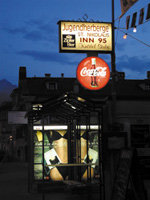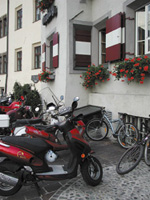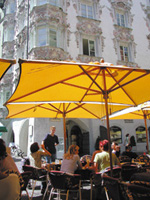The Epson PhotoPC 3100Z
Image Quality And Options In One
As the sun finished its long descent down the horizon, the lights of Innsbruck sparkled over the Inn River. Looking down on the swirling mass of blue-gray water, I supported Epson's new PhotoPC 3100Z digital camera against the railing, adjusting the 3x optical zoom (comparable to 34-102mm) and released the shutter. The response was instantaneous, and the camera's wide f/2 aperture captured the line of row houses. This solid, easy to use, high-resolution (3.3 megapixel) camera is just heavy and large enough to feel like a sophisticated imaging device (not just another point-and-shoot). Like its predecessor, the 3100Z sports a 3.34 million-pixel CCD with 24-bit color or monochrome image capture with an option to interpolate its "High" 2048x1536 resolution up to 2544x1904 (4.8 megapixel), using Epson's HyPict image enhancement technology. The PhotoPC 3100Z also provides preset parameters for printing, such as gamma level color space, contrast, sharpness, brightness, saturation, shadow paint, and color balance to ensure optimum results. The camera saves the ideal print commands in each data file. Prints from the 3100Z on the Epson 1280 were crisp, sharp, with vivid "true" color. Until last year your standard high-end commercial digital imaging device was only 6 megapixel and even today, anything higher tends to be more vaporware than reality. And while the options on any point-and-shoot are inherently limited, you get a formidable quality from this little camera. Be aware that when the camera is in HyPict mode processing time increases from 1 sec to 14, so you may not want to use it if you are in a hurry. While Epson provides a 16MB CompactFlash card that holds approximately 31 fine resolution or 155 standard resolution images, I opted to bring a Kingston 128MB card and was able to load it up with 166 High and HyPict images. |
||||||||||||||||||
|






































